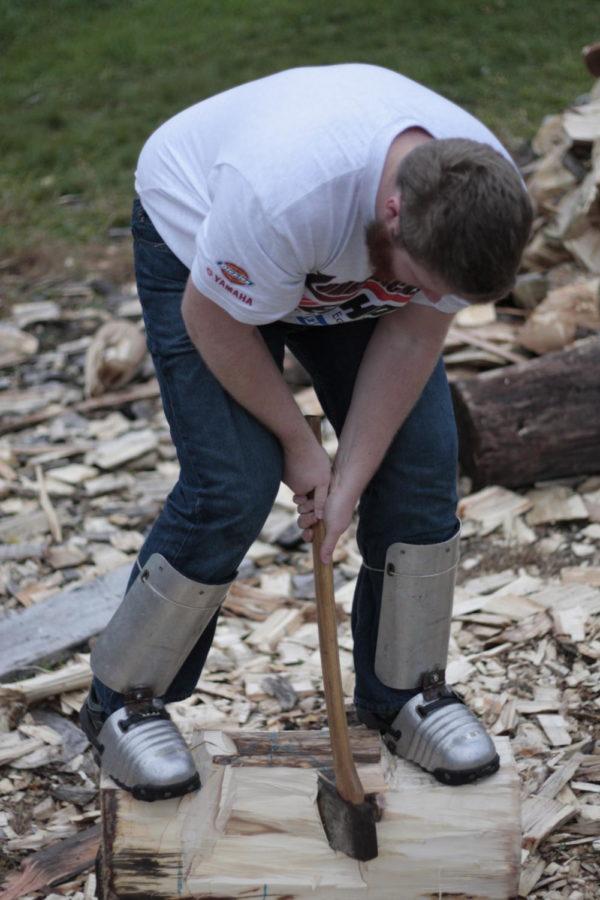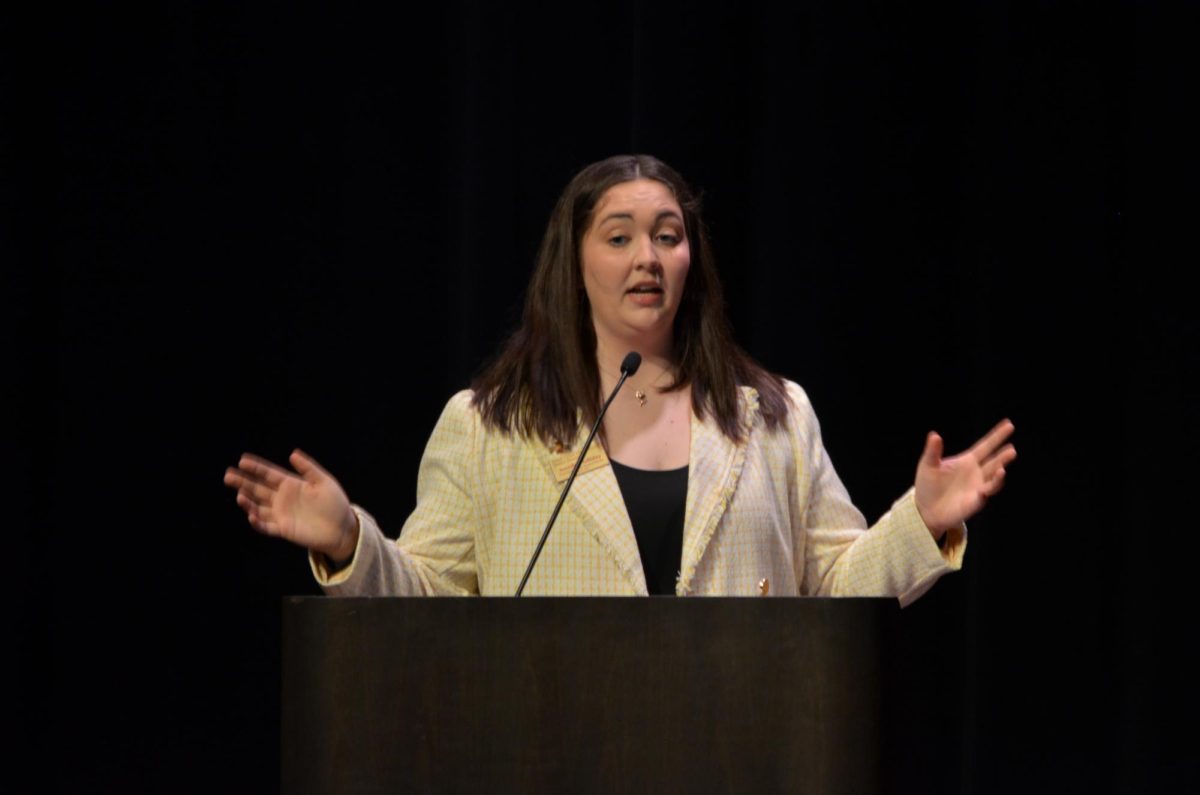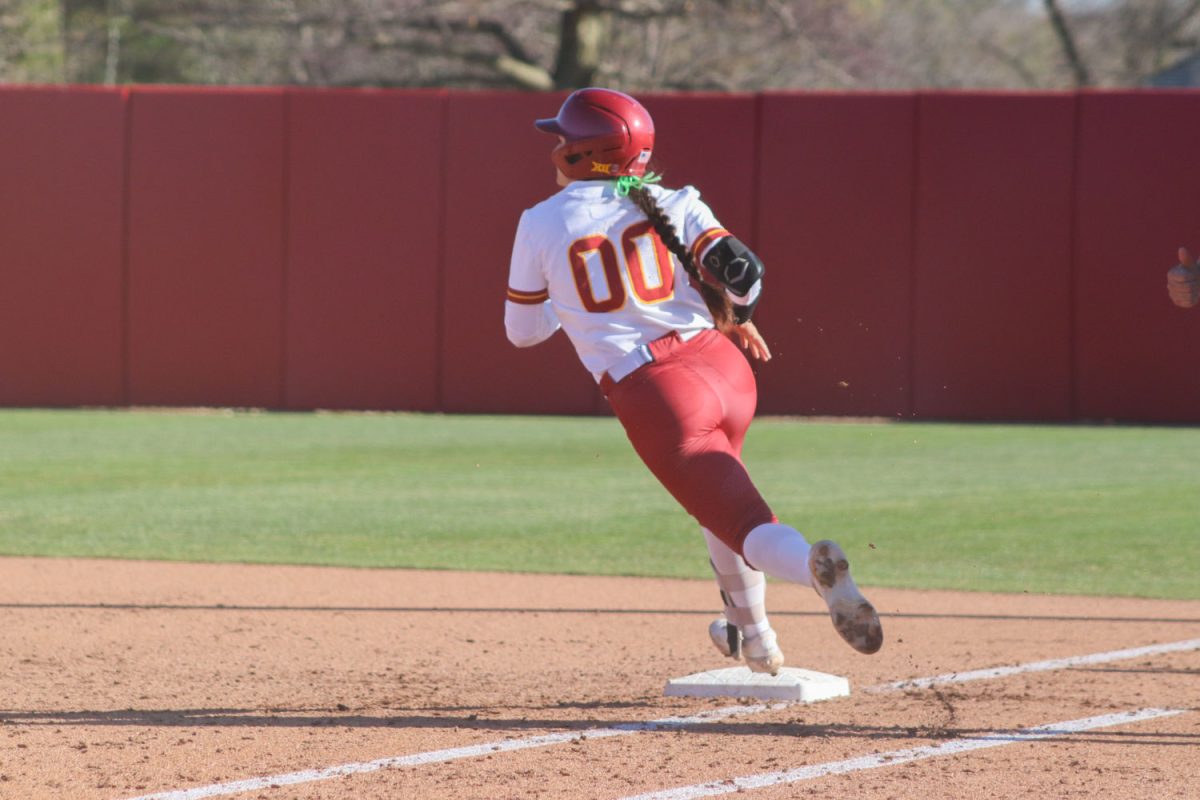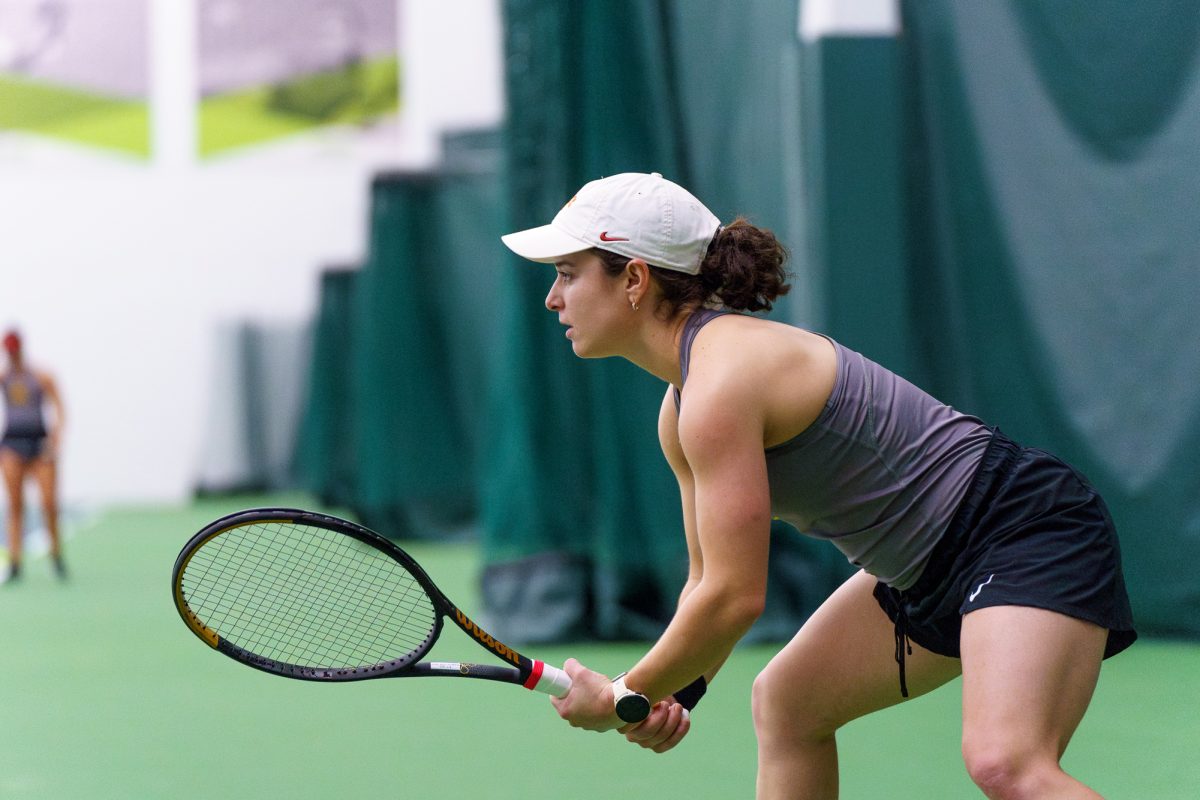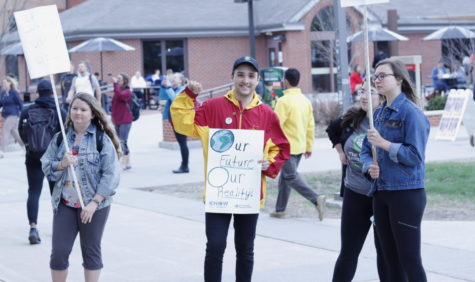Lumberjacks, lumberjills challenge stereotypes
Mariah Griffith [email protected]
Forestry Club President Abraham Harms practices an underhand chop at the timbersports team practice area. The practice area is a part of the Forestry Club tree farm.
November 29, 2015
The modern advertiser’s image of a lumberjack is a burly middle-aged man with a bushy beard and a flannel shirt.
However, 11 colleges and universities around the Midwest, including Iowa State, are challenging that stereotype with collegiate timbersports teams.
For competitions, these teams compete in approximately 15 racing-based events. Individuals, pairs or relay teams win by hacking and sawing their way through specified types and lengths of wood faster and with more finesse than their competitors while using specified techniques.
For newcomers, the events can appear to be a dangerous frenzy. Wood chips and chunks fly from the competition stage as razor-sharp racing tools eat through the soft wood.
One competition tests accuracy by challenging participants to light a match or chop it in half with a single swing. In another, called the underhand chop, competitors balance on a short pine log and cut it in half by swinging an axe between their own feet.
But the sport isn’t all breakneck hubbub.
“The first time I competed in the underhand chop, I think I’d only chopped through two logs in my whole life,” said Olivia Rauen, sophomore in animal ecology. “You accept you’re going to look a little goofy and everyone is really supportive, trying to help and yelling encouragement.”
Rauen is the youngest of four women currently on the ISU team.
“I think some girls get intimidated by the strength aspect of it,” she said. “I’m smaller, and there are a lot of really big, strong guys at competitions, but there’s a lot more technique to it than people realize.”
Team members said about 75 percent of the current ISU competitors are men, and according to the Office of the Registrar, more than 80 percent of this semester’s enrolled forestry majors are male.
Various members said expanding the timbersports team as a whole, and adding more women, would be beneficial. Then individual competitors wouldn’t have to fill as many event slots in the same competition, which would prevent them from getting tired.
In addition to events, competitions commonly include professional workshops, which provide students with individual feedback and tips from professional foresters and timbersports record holders.
The biggest regional competition of the year, called conclave, happens in the spring. Here, competitors compete against one another, but also compete to earn spots competing in the national Stihl Timbersports Series. The entire series is televised, and the professional division includes even more events and more complex skill requirements. Iowa State will host the 65th annual Midwestern Foresters’ Conclave in spring 2017.
“Right now we don’t get much publicity, but we will try to publicize a lot next year because conclave is a big deal and it should be a great chance for other students to see what we do,” said Abraham Harms, senior in forestry, Forestry Club president and timbersports competitor.
The ISU team is open to lumberjacks and lumberjills of any major and skill level so long as they participate in the Forestry Club, which sponsors the competition team.
“It’s great exercise, gives you experience with regular axes and saws as well as some chainsaw experience … and it’s a way for students to network with their peers and professional organizations,” Harms said.
By participating in the Forestry Club, students also have opportunities to volunteer with conservation teams around the county and the state.
Past projects have included invasive species removal, trail building and prescribed burning, among others. The Forestry Club will also host its annual holiday tree fundraiser as the holidays approach.
“I’d say to join with a friend,” said Julia Schwager, senior in forestry, club vice president and timbersports competitor. “The club and timbersports team are great ways to get to know people, particularly upperclassmen, but it’s nice to come in already knowing someone because that makes it easier to laugh at yourself and get better.”

